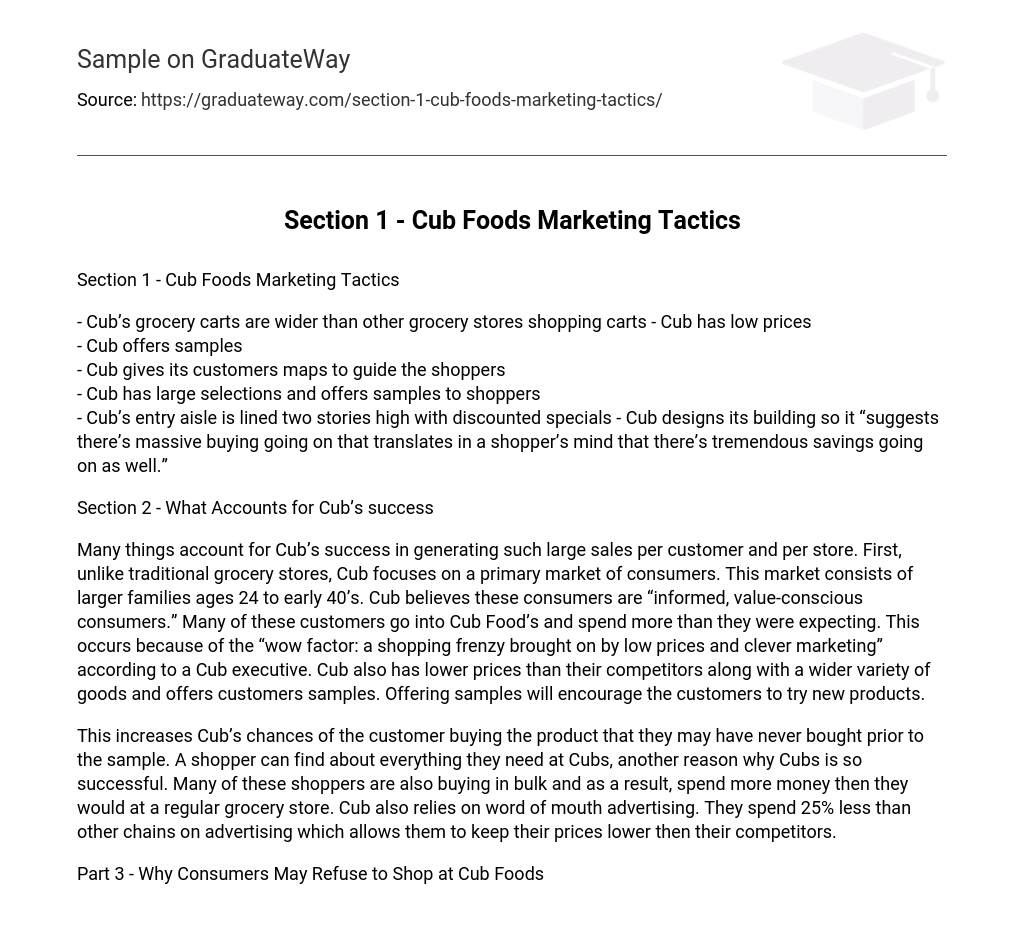– Cub’s grocery carts have a wider size compared to other grocery stores shopping carts. Additionally, Cub provides low prices.
– Customers at Cub have the opportunity to try samples.
– Cub offers shoppers maps to help guide them while they shop.
– Cub provides a large variety of items and also offers samples to customers.
– The entrance aisle of Cub’s store is filled with discounted specials that extend two stories high. Cub designs its building in a way that implies there is significant purchasing happening, which creates the perception of tremendous savings for shoppers.
Section 2 – The Factors Behind Cub’s Success
Cub’s success in generating significant sales per customer and per store can be attributed to several factors. Firstly, unlike conventional grocery stores, Cub targets a specific market of consumers – larger families aged 24 to early 40’s – whom they perceive as well-informed and value-conscious. A significant portion of these customers visit Cub Food’s intending to spend a certain amount but end up spending more due to the “wow factor” induced by attractive prices and ingenious marketing strategies, as described by a Cub executive. Moreover, Cub boasts lower prices compared to its competitors and offers a wider range of products. In addition, the company provides customers with samples of various goods, incentivizing them to try novel products.
The increased possibility of customers purchasing a product they had not previously considered is one reason for Cub’s success. Another contributing factor is the wide range of products available, making it convenient for shoppers to find everything they need. Furthermore, many customers make bulk purchases at Cub, resulting in higher spending compared to traditional grocery stores. Additionally, Cub relies on word of mouth advertising instead of spending large amounts on advertising like other chains, allowing them to offer lower prices compared to competitors.
Part 3 – Reasons Consumers May Choose Not to Shop at Cub Foods





